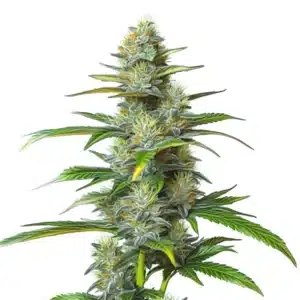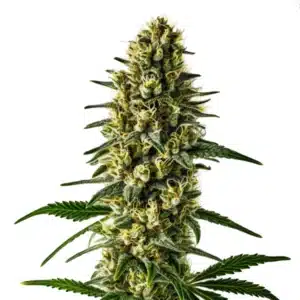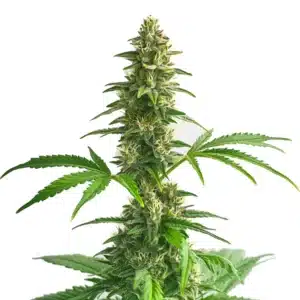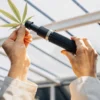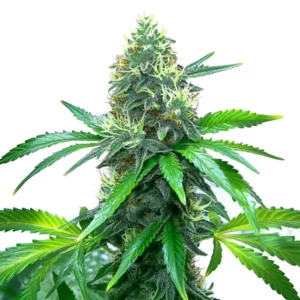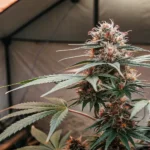
High Altitude Terpenes and Their Impact on Cannabis
Growing cannabis at high altitudes can be a game-changer. The unique environment impacts the development of terpenes, the aromatic compounds that give each strain its distinctive scent and flavor. These high altitude terpenes are influenced by factors such as temperature, sunlight, and air pressure, which can enhance their concentration and alter their profiles.
Terpenes are not just about aroma; they play a crucial role in the plant’s survival and reproduction. At high altitudes, the increased UV exposure and cooler temperatures can boost terpene production, offering potential benefits like improved resistance to pests and diseases. For growers, this means healthier plants with potentially more robust flavors and effects.
Recommended Strains
Moby Dick
|
|
THC | 24% - 27% (High) |
|
|
Type | Feminized |
|
|
Yield | High |
|
|
Phenotype | 40% Indica / 60% Sativa |
Moby Dick Autoflower
|
|
THC | 16% - 20% (Medium) |
|
|
Type | Autoflowering |
|
|
Yield | Medium |
|
|
Phenotype | 40% Indica / 60% Sativa |
One popular strain that thrives in high altitude conditions is the Moby Dick. Known for its high yield and potent effects, this strain can develop a rich terpene profile when grown in mountainous regions. The unique environment enhances its lemon and pine notes, providing an aromatic experience that is both refreshing and invigorating.
Benefits of High Altitude Terpenes
High altitude terpenes benefits extend beyond just aroma. The environmental stressors at higher elevations can lead to a higher concentration of these compounds, which may enhance the overall potency and therapeutic effects of the cannabis. This is particularly appealing to those seeking strains with strong medicinal properties.
For cultivators, high altitude terpenes can also mean a more resilient crop. The natural defenses these terpenes provide can help protect plants from harsh weather conditions and pest infestations, leading to a more successful harvest. This resilience is especially important for strains like Blue Dream, which can benefit from the additional protection and enhanced terpene profile.
Additionally, certain terpenes can improve the overall quality of cannabis by contributing to a fuller and more nuanced flavor profile. This makes the end product more desirable in both medicinal and recreational markets. The increased complexity of the terpene profile can also lead to cannabis that stands out in a competitive industry.
Moreover, the benefits of these terpenes may include enhanced cannabinoid synergy, where the terpenes work alongside THC and CBD to create a more balanced and effective experience for the user. This can lead to new opportunities for product development and innovation in the cannabis industry.
Extraction Methods for High Altitude Terpenes
Extracting terpenes involves capturing the essence of the plant’s aromatic compounds. Traditional methods like steam distillation can be effective, but they may not always preserve the full complexity of the terpene profile. Advanced techniques such as CO2 extraction are more precise, allowing for a more complete capture of the terpenes without damaging them.
For those looking to maximize the high altitude terpenes benefits, it’s crucial to choose the right extraction method. CO2 extraction, for instance, uses pressurized carbon dioxide to pull terpenes from the plant material gently. This method retains the delicate balance of flavors and aromas, making it ideal for strains like Gorilla Glue #4, known for its complex scent profile.
Extraction methods also include the use of cold trapping techniques, which capture volatile compounds at low temperatures to prevent degradation. This approach helps in maintaining the purity and integrity of the terpenes, ensuring that the final product is true to the plant’s natural essence.
Another emerging method in terpene extraction is the use of ultrasonic-assisted extraction. This technique utilizes sound waves to enhance the penetration of solvents, allowing for more efficient and effective extraction of terpenes while preserving their intricate profiles.
Promos & Deals
Effects of High Altitude Terpenes on Plants
High altitude terpenes effects on plants can be significant. These compounds help the plant adapt to its environment, providing protection against UV radiation and cold temperatures. As a result, plants grown at high altitudes often exhibit a stronger and more complex terpene profile compared to those grown at lower elevations.
This enhanced profile not only benefits the plant but also the end user. Consumers may notice more pronounced flavors and potentially stronger effects, making high-altitude cannabis a unique choice for those seeking a distinct experience. For strains like Moby Dick, this means a more intense lemon and pine aroma, offering a refreshing and uplifting experience.
The increased production of certain terpenes also contributes to the plant’s defensive mechanisms, helping it better resist environmental stressors such as drought and extreme temperature fluctuations. This resilience is a key factor in the plant’s ability to thrive in challenging high-altitude conditions.
Furthermore, the effects of these terpenes on plants can extend to their overall vitality and growth rate. The enhanced aromatic profile may attract more beneficial insects, aiding in pollination and contributing to a healthier ecosystem around the cannabis plants.

High Altitude Terpenes and Cannabis Growth
High altitude terpenes and cannabis growth go hand in hand. The unique environmental conditions at high elevations can promote better terpene development, resulting in a richer, more diverse aromatic profile. This can be a key factor in the plant’s overall growth and success, influencing everything from pest resistance to flavor complexity.
Growers aiming to cultivate cannabis at high altitudes should consider strains that are well-suited to these conditions. Blue Dream is one such strain, known for its adaptability and enhanced terpene production in mountainous environments. By choosing the right strain, growers can maximize the benefits of high-altitude cultivation.
Terpenes and cannabis growth are further intertwined through the plant’s physiological responses to altitude-induced stress. These stressors can trigger a cascade of biochemical reactions that enhance terpene synthesis, leading to a more vibrant and aromatic plant.
By understanding the relationship between altitude and cannabis growth, cultivators can employ strategies such as selective breeding and environmental control to optimize terpene production. This results in a more flavorful and potent cannabis product that stands out in the market.
Aromatic Profiles of High Altitude Terpenes
High altitude terpenes aromatic profiles are often more pronounced and diverse. The stressors of high-altitude environments, such as increased UV light and lower temperatures, can lead to a richer bouquet of scents and flavors. This makes the resulting cannabis particularly appealing to both connoisseurs and casual users alike.
For example, the Gorilla Glue #4 strain, when grown at higher elevations, can exhibit a more complex profile with earthy and pine notes that are sharper and more defined. These aromatic profiles are not just about smell; they also contribute to the overall experience of using cannabis, enhancing both the flavor and the effects.
The aromatic profiles can vary significantly between strains, providing a wide range of sensory experiences. This diversity is a key attraction for consumers who seek unique and memorable cannabis encounters that go beyond the ordinary.
Knowing the nuances of these aromatic profiles can also aid in the development of specialized products tailored to specific consumer preferences. By selecting strains with unique aromatic qualities, producers can create offerings that cater to niche markets and discerning tastes.
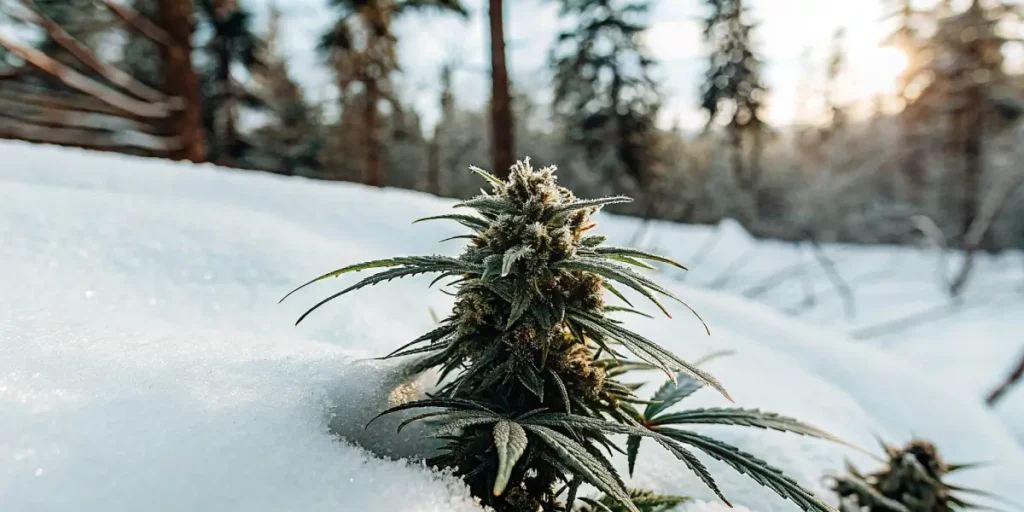
FAQs
What are high altitude terpenes?
High altitude terpenes are aromatic compounds found in cannabis that have been influenced by the unique environmental conditions of high elevations. These conditions can include factors such as increased UV exposure, cooler temperatures, and lower air pressure, all of which can enhance terpene production and alter their profiles.
These terpenes play a crucial role in the plant’s defense mechanisms, helping it adapt to the challenging environment. For growers, this means the potential for more robust flavors and effects, while users can enjoy a richer and more complex aromatic experience.
Terpenes from high-altitude strains are also known for their potential to enhance the entourage effect, where the combination of terpenes and cannabinoids results in a more comprehensive therapeutic outcome. This makes high-altitude strains particularly attractive for medicinal use.
Besides, terpenes can vary greatly depending on the specific location and climate, resulting in a diverse array of aromatic profiles even within the same strain. This variability adds to the allure and uniqueness of high-altitude cannabis products.
How do high altitude terpenes benefit cannabis plants?
The benefits of high altitude terpenes for cannabis plants include increased resistance to pests and diseases, as well as improved adaptation to environmental stressors. The higher concentration of terpenes in these plants helps protect them from harsh weather conditions and increases their overall resilience.
This resilience can lead to healthier plants and more successful harvests, making high altitude cultivation an attractive option for growers. Additionally, the enhanced terpene profiles can result in cannabis that offers unique flavors and effects, appealing to a wide range of consumers.
Benefits also encompass improved photosynthetic efficiency, which allows the plants to make better use of available sunlight, even in challenging conditions. This can result in more vigorous growth and higher yields.
Furthermore, the rich terpene profiles contribute to the overall quality and marketability of the cannabis, providing growers with a competitive edge in the industry. This underscores the importance of terpene profiles in modern cannabis cultivation practices.
How can I extract high altitude terpenes effectively?
Extracting high altitude terpenes effectively involves choosing the right method to capture the full terpene profile. Techniques like CO2 extraction are popular because they preserve the delicate balance of flavors and aromas without damaging the terpenes.
Another option is solventless extraction, which uses physical methods to retain the plant’s natural character. By knowingthese methods, growers and producers can ensure they maintain the quality of their high-altitude cannabis, offering consumers the best possible experience.
Extraction methods should also consider the use of low-temperature techniques to prevent thermal degradation. This ensures that the terpenes remain intact and vibrant, preserving their full aromatic and therapeutic potential.
Additionally, integrating advanced filtration systems during the extraction process can help in removing impurities, resulting in a cleaner and more refined terpene extract that truly reflects the essence of high-altitude cannabis.
Are there specific strains that thrive in high altitude conditions?
Yes, certain cannabis strains are particularly well-suited to high altitude conditions. Strains like Moby Dick, Blue Dream, and Gorilla Glue #4 are known for their adaptability and enhanced terpene production when grown at higher elevations.
These strains can benefit from the unique environmental stressors of high altitudes, resulting in a more robust terpene profile and potentially stronger effects. Choosing the right strain is key to maximizing the benefits of high-altitude cannabis cultivation.
High altitude terpenes and cannabis growth are closely linked, and selecting strains with proven high-altitude performance can lead to better crop outcomes. These strains are often bred for their ability to withstand the challenges of mountainous environments.
Identifying and experimenting with other lesser-known strains that may also thrive in high altitudes can provide growers with new opportunities for differentiation and innovation in the cannabis market.
What are the effects of high altitude terpenes on cannabis users?
For cannabis users, high altitude terpenes can offer a more intense and complex sensory experience. The unique aromatic profiles developed at high elevations can lead to richer flavors and potentially enhanced effects, making these strains particularly appealing to those seeking something different.
Whether you’re a seasoned connoisseur or new to cannabis, exploring unique terpene profiles can offer a fresh perspective on familiar strains. By discovering these distinct characteristics, users can enjoy a more satisfying and memorable cannabis experience.
The effects of these terpene profiles on users can also include a heightened sense of relaxation and euphoria, as the richer terpene combinations interact synergistically with cannabinoids to enhance the overall experience.
Moreover, the complex aromatic profiles associated with these terpenes can provide users with a more immersive and multi-sensory experience, elevating the enjoyment of cannabis consumption to new heights.



